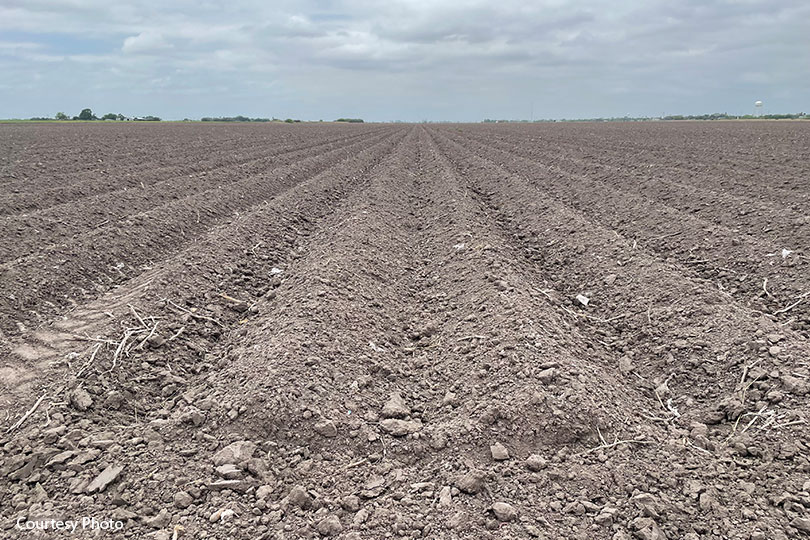By Shelby Shank
Field Editor
Farmers and ranchers are facing ongoing drought conditions in the Rio Grande Valley.
Dry conditions have led cattle ranchers to downsize their herds and sell their cattle because they don’t have grass or hay to feed them.
Crop farmers are running into similar conditions with hot temperatures and high winds, making it difficult to get crops planted.
“Farmers are trying to take advantage of these good prices, but the current conditions are leaving farmers to cut farm acreage in half to have enough irrigation,” Brian Jones, Texas Farm Bureau District 13 state director, said. “You’re losing a lot of opportunity costs by having to split your farm in half and not being able to farm it for a year.”
Jones is an farmer in the Valley near Edcouch. He grows irrigated cotton, corn, grain sorghum and soybeans.
The Falcon and Amistad Dams are sitting at low percentages of total conservation capacity, with 30% combined storage. The United States shares the two Rio Grande River Basin reservoirs with Mexico.
The dams are a source of water for much of the Valley.
“I’ve had to cut my farm in half to have enough water to try and grow crops on the irrigated side and take prevented planted crop insurance on the other half,” Jones said. “My district is allocated half an irrigation per acre, meaning it takes two acres to irrigate one to have enough water to irrigate one acre.”
That means thousands of normally irrigated acres will likely go unplanted this year because of the lack of irrigation water.
The year started with terribly dry conditions for farmers and ranchers, despite the predicted change in weather patterns later this year. According to Jones, the Rio Grande Valley hasn’t received a good rainfall since November 2022.
Rain amounts were high in 2022, but they came in isolated events and in large amounts. Some of these rainfall events were well timed. For instance, heavy rainfall occurred in April and May, resulting in four to five inches each, bringing in much needed moisture for crops.
Although farmers in the Valley had a good crop year in 2022, drought conditions have been ongoing since 2019.
While water conservation efforts are still in effect, Jones said they are not being pushed, promoted or enforced.
Drought conditions are also prevalent over 60% of the state. From west of San Antonio to far south of Brownsville and into the Panhandle, Texans are experiencing severe drought conditions.
But farmers and ranchers continue to have an optimistic outlook despite the challenges that drought brings.
“I think all farmers are optimists, whether people think so or not,” Jones said. “Each year starts with a new planting season. As farmers, we like to watch a plant go from seed to seedling, and then growing all the way to maturity. That’s what gives me the optimism and hope. Every new crop year is a brand-new sign of life.”

